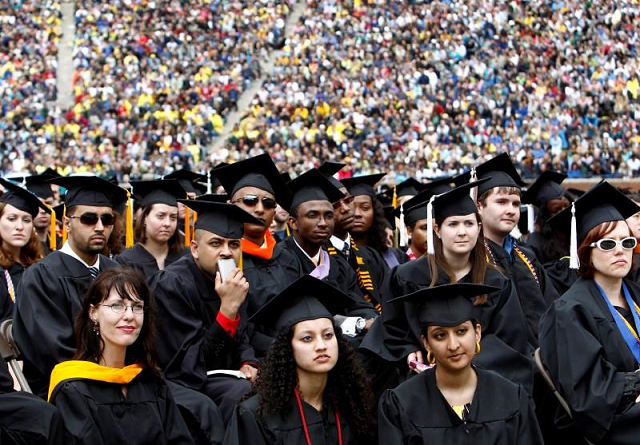
And they are protected since they do not have to make payments if they cannot find a job after graduation, and for as long as their salary remains below a certain threshold.
These "Income Share Agreements" or ISAs so far are only offered by a few universities and training centers, such as computer coding schools. But they are drawing more attention as the student debt crisis worsens.
That debt load, which now tops $1.5 trillion nationwide, means many Americans must delay or give up on dreams of home ownership and other large purchases, that in turn put a damper on the economy more broadly.
It is thanks to an ISA that Paul Laurora will graduate on May 11 from Purdue University, Indiana as a chemical engineer.
Despite state-subsidised loans, his own savings, and a contribution from his parents, the 22-year-old ran out of money after only two years of studies, with tuition and fees costing $40,000 a year for students from outside of Indiana.
When a bank refused to give him a new loan, he started selling some possessions on eBay and even considered dropping out of school to take a job for a semester, or use his parents' retirement savings. But then he heard about the ISA option.
"I did not want to stop halfway just because I could not afford it. That would have been the worst reason," he told AFP.
Through the ISA, the university has advanced him about $30,000, which he will repay with 9.6 percent of his salary for a period that will depend on his level of income.
Purdue University was the first major public college to offer ISAs. Since 2016, it has paid approximately $9.5 million to 759 students for their education.
Other institutions have followed suit, each with their own characteristics. Colorado Mountain College reserves this program for undocumented immigrant students who cannot access government-sponsored loans.
Private training centers have also moved toward this type of scholarship, like General Assembly, which offers intensive computer training for three months at $40,000.
Students signing an ISA pay nothing but pledge to pay 10 per cent of their salary for up to four years if they earn at least $40,000 a year, as much as 1.5 times the cost of their education.
"They recognise if they do very well they will pay more," said Tom Ogletree, who is responsible for ensuring that the school remains accessible to as many people as possible. "But they won't be penalized if there is a problem and unlike a loan they won't have to repay."
Students can pause the payments if they have to stop working for personal, family or health reasons.
Fake university: India cries foul as US detains students
"Life happens," he said.
And because the school cannot recoup the fees until the student is working and can fulfill the contract, it is in the institution's best interest to ensure the student's professional success, Ogletree said.
Tonio DeSorrento, founder of Vemo Education, a company that helps schools design their own ISA contracts, said some institutions fund the ISAs themselves, while others use grants, endowments and "impact investors."
But experts warn that this new funding system, which also exists in Latin America, is not a miracle solution. Some institutions may use them to attract more students, at the risk of fueling a surge in tuition and fees.
ISAs also reinforce inequalities since better terms are offered to students in more lucrative majors, says Jessica Thompson, of the Institute for College Access and Success, which helps to make higher education more affordable and accessible.
US varsities offers placements
In contrast, "federal loans serve as an equalizer," she said.
But these new contracts have drawn the attention of in Wall Street.
A new platform, Edly, allows accredited investors to bet on pre-selected college programs. It has already raised $2 million for the Holberton Computer Engineering Training Center in San Francisco.
For investors looking for new investments, ISAs offer a relatively attractive return, says Edly Co-founder Charles Trafton.
Legislation around ISAs is currently unclear, although Congress and several states are debating different approaches.
But "once we get some federal regulation, schools and investors will all know the rules of the game and the adoption rate will go even faster than it is now, and it is growing rapidly," Trafton said.























COMMENTS
Comments are moderated and generally will be posted if they are on-topic and not abusive.
For more information, please see our Comments FAQ